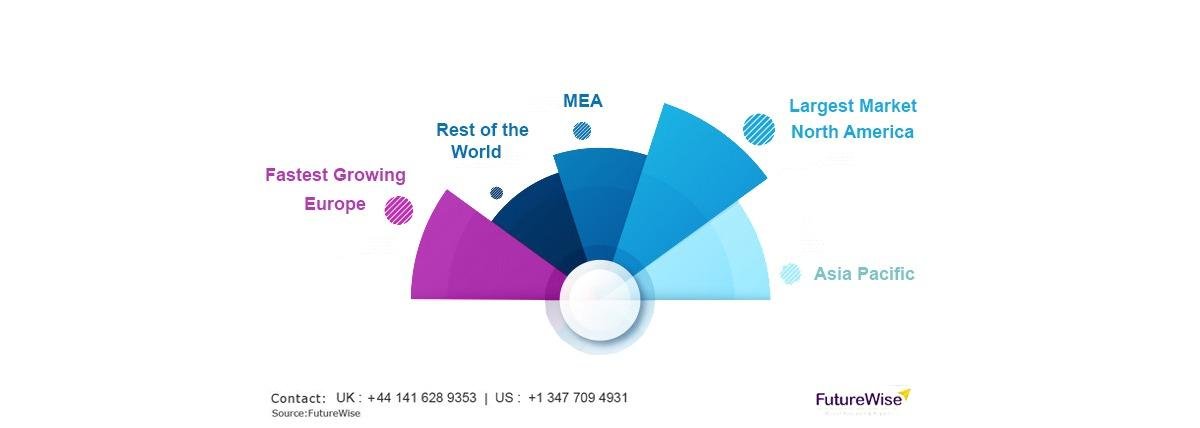According to FutureWise analysis the market for biological imaging reagent in 2023 was US$ 20.51 billion, and is expected to reach US$ 40.03 billion by 2031 at a CAGR of 8.70%.
Biological imaging reagents are specialized molecules or compounds used to visualize and study biological processes at the cellular, tissue, or organismal level. These reagents are critical tools in biomedical research, diagnostics, and therapeutic development, enabling scientists to observe dynamic processes in living systems with high specificity and sensitivity. By interacting with specific biological targets, such as proteins, nucleic acids, or cellular structures, these reagents produce detectable signals—fluorescence, luminescence, or contrast—for imaging modalities like fluorescence microscopy, magnetic resonance imaging (MRI), or positron emission tomography (PET).
Fluorescent dyes, quantum dots, and radiolabeled probes are common types of biological imaging reagents. Fluorescent dyes, such as fluorescein or rhodamine, bind to specific cellular components, emitting light when excited, which is ideal for visualizing protein localization or gene expression in live cells. Quantum dots, semiconductor nanoparticles, offer brighter and more stable fluorescence, enabling long-term imaging in applications like cancer research. Radiolabeled probes, used in PET or SPECT imaging, incorporate isotopes like fluorine-18 to track metabolic activity or disease progression in vivo. Additionally, contrast agents like gadolinium-based compounds enhance MRI resolution, aiding in the detection of tumors or vascular abnormalities.
The design of imaging reagents prioritizes specificity, biocompatibility, and signal strength. Advances in molecular biology and nanotechnology have led to the development of targeted reagents, such as antibody-conjugated fluorophores or aptamer-based probes, which selectively bind to disease markers. Challenges include minimizing toxicity, optimizing signal-to-noise ratios, and ensuring reagent stability in physiological environments. Emerging innovations, like near-infrared dyes for deep-tissue imaging and photoactivatable probes for super-resolution microscopy, are expanding capabilities.
Biological imaging reagents have revolutionized fields such as neuroscience, oncology, and developmental biology by enabling non-invasive, real-time observation of complex biological processes. As precision medicine and personalized diagnostics grow, these reagents will continue to drive breakthroughs, offering unparalleled insights into the molecular underpinnings of life and disease.
FutureWise Market Research has published a report that provides an insightful analysis of Biological Imaging Reagent Market trends that are affecting the overall market growth.
Request a Free Sample @ https://www.futurewiseresearch.com/contact.aspx?rpt=4244&type=requestsample
Biological Imaging Reagent Market Segmentation:
By Class
- Contrast Reagents
- Optical Reagents
- Nuclear Reagents
By Modality
- MRI
- Ultrasound
- X-ray and CT
- Nuclear
- PET
- SPECT
- Optical Imaging
- Others
By Application
- In Vitro
- Proteomics
- Genomics
- Cell Biology
- In Vivo
By End User
- Diagnostic Laboratories
- Life Science Companies
- Imaging Centers
- Academic and Research Institutes
- Others
By Region
- North America
- Europe
- Asia-Pacific
- Latin America
- Middle East and Africa
Competitive Landscape in Biological Imaging Reagent Market:
- Bayer AG
- Thermo Fisher Scientific, Inc.
- PerkinElmer, Inc.
- Guerbet
- Lantheus Holdings, Inc.
- Bracco S.p.A.
- GE Healthcare
- Becton, Dickinson and Company (BD)
- Siemens Healthineers
- Luminex Corporation
Buy now the latest version of this report: https://www.futurewiseresearch.com/checkout.aspx?ReportId=4244&license=multi
**Objectives of this Study: **
- To provide a comprehensive analysis of the Biological Imaging Reagent Market By Product Type, By Application and By Region.
- To offer detailed insights into factors such as drivers, restraints, trends, and opportunities, as well as segmental and regional influences on market growth.
- To evaluate current market trends and forecast micro-markets, presenting overall market projections in the form of data sets and PowerPoint presentations.
- To predict the market size in key regions, including North America, Europe, Asia Pacific, Latin America, and the Middle East and Africa.
Flexible Delivery Model:
- We have a flexible delivery model and you can suggest changes in the scope/table of contents as per your requirement
- The customization services offered are free of charge with the purchase of any license of the report.
- You can directly share your requirements/changes to the current table of contents to: sales@futurewiseresearch.com
